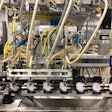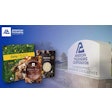How Rising Material Costs are Affecting Petfood Packaging
It's a challenging time for the packaging industry, with rising costs for raw materials, energy, fuel and transportation leading to price increases across package formats.
While there's no easy solution to these complex market issues, it has led brand owners to delve below the surface to get the most from the materials they are using. Metal food cans, which are used to package 77% of wet petfood products in North America (Source: Euromonitor International ), are well positioned with many inherent properties that add value to the consumer, the brand owner and the industry at large.
One of the main economic advantages of metal is the ability to infinitely recycle both steel and aluminum, with absolutely no loss or alteration in quality. Recycled in a true material-to-material loop (i.e., steel to steel), metals retain their original properties regardless of how many times they are recycled. Many other materials cannot make such a claim. As such, neither steel nor aluminum needs to be downgraded to less demanding uses after recycling. Both metals are permanently reusable.
While other materials promote recycling, there is a limit to the number of times such materials can be transformed into new packaging, especially for applications involving direct food contact.
Cans are also an economical form of packaging. First, cans fill the fastest on packaging lines. In addition, because of their inherent strength, cans require only minimal secondary or transport packaging during shipment. Cans need no refrigeration or any ambient temperature control during shipment and storage, reducing energy costs and CO2 emissions.
Metal cans provide material and design simplicity, making them quite efficient to manufacture. In most can-making operations, the metal starts as a flat sheet and then is manipulated into the familiar one-piece canister.
Crown's latest innovations in easy-open ends also support manufacturing efficiency. For example, our Easylift easy-open ends can be used on existing can production lines with only minor, one-off adjustment. This feature allows packagers to make the transition without incurring production downtime. The ends also continue to perform through all levels of the supply chain, further contributing to manufacturing efficiencies. Crown's PeelSeam peelable ends are also designed to run through over-pressure retorts and conventional filling and seaming equipment.
Both of these technologies are highly compatible with petfood applications. For example, Nestlé Purina Petcare Europe has incorporated Easylift easy-open ends on its 400g packages of cat and dog food in The Netherlands and other locations in Europe.
Another key advantage of metal packaging is its superior barrier characteristics. By providing an ideal light and oxygen barrier, food cans have the longest shelf life of any food packaging. Because of this, less product goes to waste.












